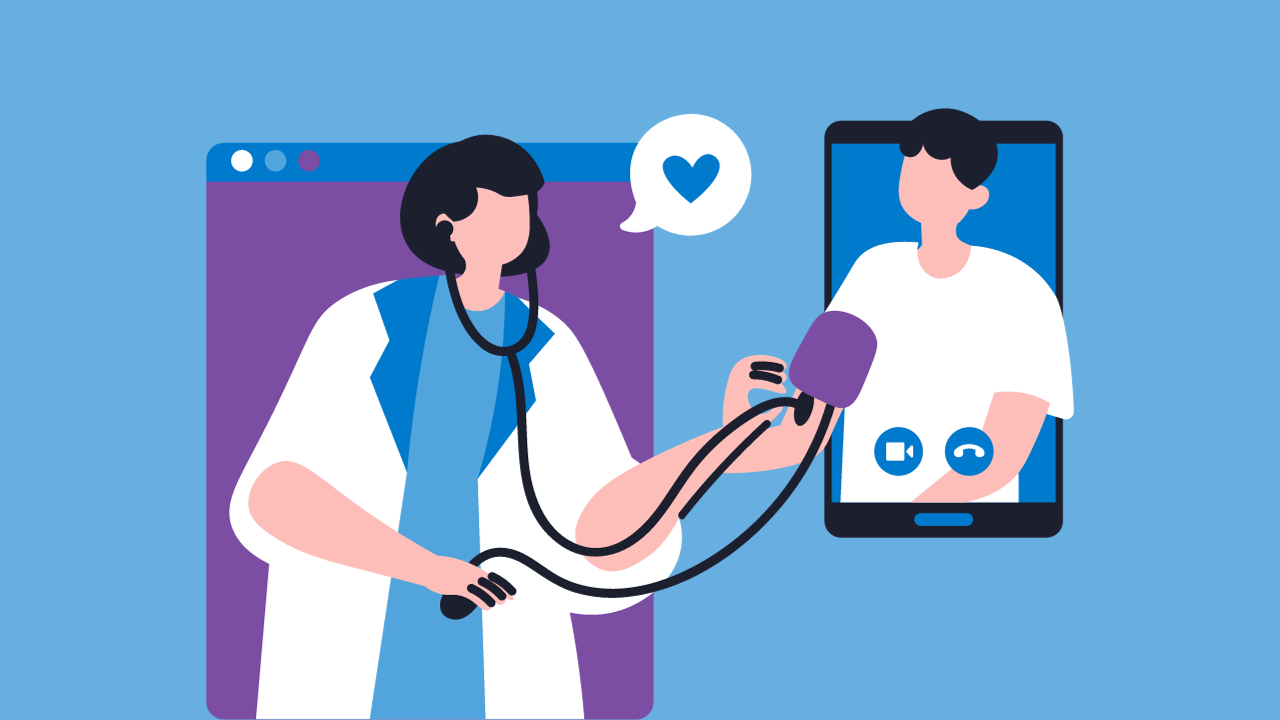13 Strategies to Improve Healthcare Employee Engagement

Since the COVID-19 pandemic began, the healthcare industry has been in the limelight for several reasons. High healthcare staff turnover rates are one of them.
Many healthcare employees face the heat of a growing patient list, administrative work, and an erratic work schedule.
A paper published in the Journal of General Internal Medicine found that the average burnout rate in healthcare workers is 49.9%. This is one of the reasons why the quit rate in the healthcare sector still stands at 2.3% (more than 500,000 workers per month) as of July 2023.
The consequences of this are severe, as it could result in more errors, diagnoses, or oversights in patient care. This is why you must find ways to improve employee engagement at work.
Below, we’ve listed 13 ways to help create better experiences for your employees.
13 ways to improve healthcare employee engagement
A study by Harvard Business Review found that a 1% increase in employee engagement can reduce hospital-acquired complications by 3% and readmissions by 7%. Here are a few ways in which you can improve the employee experience:
1. Get buy-in from the leadership team and train them
Before you implement any initiative, getting buy-in from upper management and the core leadership team is important. Employees always look to them to understand how serious an organization is about new initiatives. They won’t take it seriously if there’s active disinterest at the upper management level.
Show how engagement numbers are dwindling and how that impacts the patient experience, too. After this, present your plans and how you will execute them. Make sure you have a vocal figure at the top who echoes this sentiment publicly to create visibility.
Additionally, it’s important to train healthcare leaders. For example, some employees might think the leadership team is out of touch with reality or have poor people skills. Identify these gaps and get them up to speed.
2. Solicit regular feedback from employees to gauge sentiment
The only way to know your employees’ needs is to ask them directly. This removes any assumptions you make and lets you adopt a proactive approach to understanding their concerns.
For instance, you can deploy a periodic pulse survey with closed and open-ended questions to gauge employee satisfaction and engagement levels. Use an employee feedback tool to do this anonymously to get honest feedback.
In addition, you can also keep an open backchannel—like a digital suggestions box to encourage employees to share their thoughts when they feel called to do so.
If you want to do this one-on-one, conduct interviews or town hall meetings to gauge employees' feelings. You’ll get real-time feedback and know what direction your engagement initiatives should take in the short term.
3. Implement measures to improve employee well-being
By its very nature, the healthcare industry is rife with stress, long hours, and emotional tolls. High stress and burnout levels are common, and that issue has only gotten worse with the pandemic. So, recognizing and fixing this will go a long way in helping you engage, satisfy, and retain your employees.
Consider offering flexible work schedules or a rotation-based schedule to give employees enough time to recuperate. You can also introduce wellness programs or offer stipends for physical and mental health services. This gives them an incentive to seek help when they need it.
Additionally, you can cap the number of hours an employee can work every week. It actively prevents them from overworking and encourages them to maintain a proper work-life balance.
4. Improve the patient experience to positively impact engagement
When patients are satisfied, that is reflected in the attitude of healthcare workers. As healthcare providers and administrative staff are usually on the receiving end of a patient’s feedback, they also face the negative experiences that come with it.
In most cases, the patient experience is not just dependent on the competency and behavior of the employee. Still, it can also be attributed to a lack of streamlined processes and organizational policies. So improving the patient experience can go a long way in reducing the burden on your employees.
For example, partner with patient-centric payment providers or install digital systems that remove the burden on both patient and provider.
5. Ensure employees have access to the latest L&D programs
The healthcare system is constantly evolving. Now, physicians and nurses have access to better equipment, newer surgical techniques, and improved methods for patient care. It also means that your employees must stay updated with relevant trends and techniques.
You need a robust learning and development (L&D) program to cater to that need to achieve better outcomes in the long run.
For example, hold regular workshops and seminars with leading experts to train employees quickly. Additionally, give them access to self-paced courses or an annual budget to attend conferences so they can gain skills from other avenues too.
Employees will see that you care about their professional development and will be more likely to stay engaged at work as they’ll want to put their skills into practice.
6. Offer rewards and recognition programs to create visibility
It's easy for tireless efforts to go unseen, especially in healthcare where things are fast-moving. But when companies invest time in creating a recognition program, the feeling of being valued increases by 32%.
You can invest in software that lets you do this more easily or implement other initiatives. Here are a few examples:
- Create an “Employee of the Week” board and spotlight employees.
- Give every employee access to tools where they can shout out their peers.
- Spotlight employees in a weekly newsletter or team meeting.
- Conduct award ceremonies to highlight the best-performing team or employees.
These things go a long way in showing employees that you see the work they’re putting in.
7. Leverage new technologies to streamline internal workflows
A Medscape report found that physical medicine and rehabilitation physicians spend 19 hours on paperwork every week. That’s more than 900 hours that each employee spends on only paperwork each year.
While healthcare is a slow-moving industry when it comes to adopting new technologies, it’s key if you want to reduce the burden on your employees. Identify workflows causing frustration and evaluate options to see how well they might solve these problems.
For example, install integrated electronic health records (EHRs) seamlessly with other platforms like e-signature and payment processing software. It streamlines everything, resulting in a better patient and provider experience.
8. Introduce team-building opportunities for employees
Collaboration is the backbone of efficient patient care, from nurses coordinating with doctors to administrative staff working with healthcare practitioners. To improve this collaborative effort, conduct team-building exercises to build rapport.
These team-building activities don’t have to be long either. You can conduct five-minute team building exercises like Four Walls Communication and Gartic Phone. Here are a few other ideas:
- Annual retreats
- Scavenger hunts
- Board games
- Escape rooms
This helps team members bond with each other and improves daily interactions in the workplace.
9. Encourage individual growth and autonomy for better outcomes
When employees are given more independence at work, they’re more likely to be engaged, as they’re accountable for their actions. Every healthcare professional brings in their expertise, so trusting them to do their jobs well shows you trust them.
Plus, it’s challenging to micromanage every move because the job requires heavy patient contact. It also ensures employees are invested in their growth, actively seeking opportunities to improve their skills and performance. At the end of the day, your organization stands to benefit from it.
10. Create an open-door policy to be more available
Implementing an open-door policy where senior staff and management remain approachable and accessible creates an atmosphere where concerns, ideas, and feedback are welcome. When employees feel there’s a space to voice their input, they’re more likely to take you up on it.
It reflects your leadership style, a commitment to transparency, and mutual respect. And it helps you address concerns as and when they arise, promoting a healthier work environment.
11. Invest in diversity, inclusion, and equity initiatives
Between 2020 and 2021, the topic of diversity and inclusion experienced a 205% increase in growth as more employees felt the need to work in an inclusive environment.
Your patient population is going to be diverse in nature, so your employees should be too. They’ll bring their perspectives and experience to the workplace, resulting in better patient outcomes. These policies actively combat discrimination in the workplace and promote equity, ensuring opportunities are accessible to all.
12. Create a culture of accountability and trust
Apart from autonomy, creating a workplace culture of accountability and trust results in better outcomes. A Harvard Business Review study found that when healthcare workers are not held accountable for their actions, it impacts hospital and patient outcomes.
When mistakes happen—as they inevitably will—it’s essential to approach them as learning opportunities rather than mere points of blame. This is especially true in healthcare, where making errors could be the difference between life and death.
Encourage employees to report bad behavior, lack of compliance with organizational policies, and other issues. But also provide a safe space for them to do so—preferably anonymously. For example, have an open backchannel to report issues so they can’t be tracked and the problem can be solved immediately.
13. Build better change management plans for future initiatives
Business transformation is becoming a common theme as healthcare organizations move away from legacy systems. This comes with its own set of challenges.
As employees are used to their way of doing things, introducing new workflows or systems could cause disruptions. This is why you need effective change management policies in place. When employees deal with 10 changes each year on average, they’ll get fatigued quickly, resulting in lower levels of engagement.
It's best to involve employees in the process and show them that the change benefits them. Show them why upper management decided to implement this change and what the potential impact would look like.
Additionally, getting regular feedback and acting on it throughout the rollout could reduce resistance and increase employee buy-in.
As long as you prepare your employees, they’re more likely to accept the change. Over time, better systems can improve their engagement levels, as they’ll be more productive and satisfied.

Improve employee engagement in healthcare to create better patient outcomes
You must cater to the needs of your employees, as it directly impacts the quality of care your patient receives. Many engagement strategies can help you improve job satisfaction and employee retention. However, getting feedback is one of the best ways to do that.
You demonstrate an inherent respect for their workforce’s expertise and experiences by actively soliciting, valuing, and acting on feedback. Using Poll Everywhere’s feedback tool, you can create pulse surveys, suggestion boxes, and polls to gather feedback anytime.
For example, if you need to gauge employee sentiment on a specific change management initiative, create an employee engagement survey and send it to them via email. Or, if you're conducting a training session and need to take the pulse of the room, deploy a poll to ask them for feedback during or after the session.
The goal is to solicit feedback regularly, not just at the end of the year, so that you can identify potential problems before they disrupt the workplace.
Interested in learning more about our feedback tool? Schedule a demo with us today.